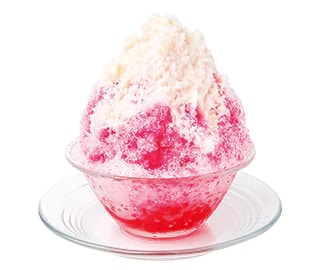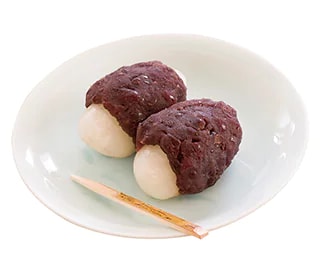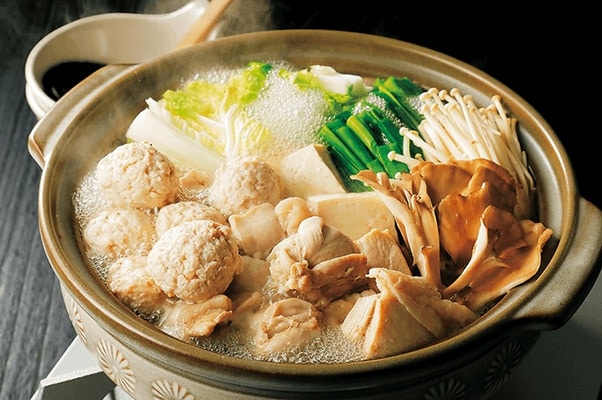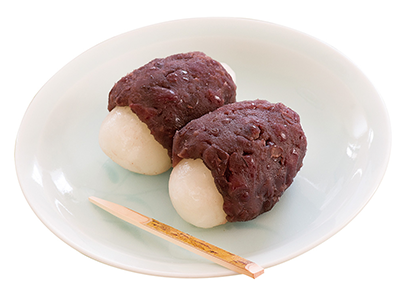
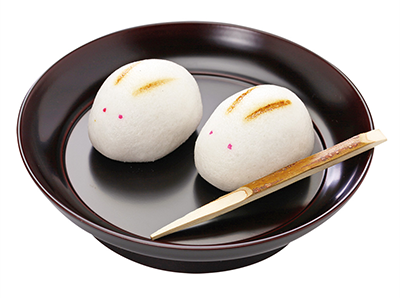
Kansai-style oval tsukimi-dango wrapped in sweetened azuki bean paste; bunny-shaped manju buns.
Otsukimi, the Japanese tradition of full moon viewing, falls on the fifteenth night of the eighth month of the lunar calendar, roughly September or early October on the Gregorian calendar. This day is called jugoya, believed to be the night when the most beautiful moon of the year can be observed. This celebration of the full moon originated in China as the Mid-Autumn Festival. In Japan, the moon is regarded as embodying the spirit of agriculture, and otsukimi is held to express gratitude for a bountiful harvest.
Special offerings are made to the harvest moon during otsukimi, the most iconic of which are tsukimi-dango round white moon-like dumplings of kneaded and steamed rice flour. Another traditional offering is newly harvested satoimo taro, which is why the festival is also referred to as imo-meigetsu, or “taro harvest moon.” Accompanying these food presentations is a vase of susuki Japanese silver grass that evokes the spirit of autumn.
Otsukimi have been held for centuries
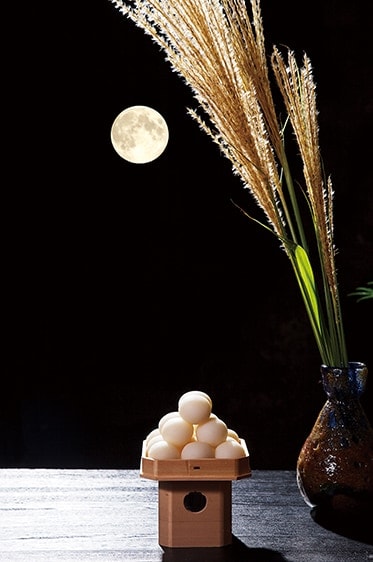
Tsukimi-dango differ in shape, depending on the region. In eastern Japan, they are typically rolled into round balls and piled in a pyramid; in western Japan, they are often formed in taro-like oval shapes and wrapped in an sweetened azuki bean paste.
Otsukimi have been held for centuries: the earliest is recorded as being held by the emperor in the early tenth century. In the seventeenth century, otsukimi became more popular among the general public, and it was during this time that today’s customs of presenting tsukimi-dango offerings and displaying susuki grass began.
Otsukimi is infused by an ancient folktale about a rabbit on the moon who pounds mochi using a mortar and pestle, and people often imagine seeing that image when they look up at the full moon. As otsukimi approaches, a wide range of rabbit-themed confectionery begin to appear. People enjoy steamed buns, cakes and yokan sweet bean jelly with bunny and moon motifs. Fast-food restaurants offer moon-themed hamburgers, while convenience stores sell otsukimi-themed Japanese desserts with a Western twist, like tsukimi-dango combined with custard pudding and cream.

